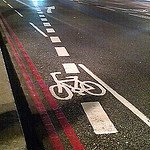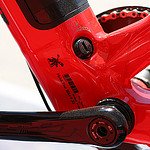Simple Guide about Mountain Bike Tires Reality
“Just Like Choosing your Shoes
Bicycle Tires Require Some Attention”
Know Important Characteristics
Let’s take a look at basic characteristics of mountain bike tire. Different materials, dimensions and air pressure may result in different riding experience.
Material plays important role for such characteristics as traction, reducing of rolling resistance and overall durability. Tire composition may include various fillers and polymers for better traction.
Can you afford higher price?
If so, you may get tires with silica-silane material instead of carbon. What do you get? Reduced rolling resistance. By the way… Rolling resistance is also related with tire dimensions.
So, if you have wider bicycle tires, its sidewalls are less flexible while rolling what results in lower rolling resistance.
Finally, air pressure also plays important role. Lower pressure in tires means more flexing of sidewalls and higher rolling resistance.
Keep these characteristics in mind, as rolling resistance is something you would like to reduce. So…
More about Pressure
Air pressure in your mountain bike tire should be between 30 and 65 psi (pounds to square inch).
If you ride at lower pressure you get better traction. On the other hand – your tire becomes soft and therefore more exposed to pinholes and damages.
What if you inflate over maximum?
Your tube may blow. Especially if you are fan of aggressive riding. On the other hand - higher tire pressure gives you more speed. But… traction level reduces.
Be patient to find that perfect match.
Decision Time. Where to Start?
Characteristics explained above apply to all tires. But how to select that one particular product? Size, riding surface and tire tread are the things that matter.
Size

If you are not buying completely new wheelset, be sure your new tires match your rims. The information you need is imprinted on the side of your tire.
For example, I currently have 26x1.95 tires. This means bead-to-bead diameter (26 inches) by the width (1.95 inches). Note, that tire width differs subject to your bike purpose.
Usually XC (cross country) mountain bike tires width will vary between 1.8” - 2.4”. The same applies to AM (all-mountain) bikes. You would like wider tires only if your trail is downhill or freeride. In that case look for something between 2.5” – 3.0”.
As you noticed, trail surface dictates the size of your tire. And not only this. Let’s take a closer look at various tire treads…
Tread
Mountain bike tires usually are knobby tires. Anyway, there are many tread differences.
Yes. Again, they depend on your trail.
For commuting mountain bike you would like to use a slick tire. That’s because on asphalt you need less grip but more speed. Slicks offer you this.
What about more aggressive biking? Knobby tires are at your disposal. More tread means more grip, better traction, but... Guess what? Remember rolling resistance? Speed suffers.
No one says you can’t equip your commuting mountain bike with knobby tread tires. However, they are designed for harder trails. Such as off-road, where tread improves traction and riding characteristics.
Finally, as always, there is a middle way. Let’s call it semi-knobby, or semi-slicks.
Couple more things about tread
Have you heard about specialized bike tire intended only for front/end use? So, they exist.
Just put them in the right place. And look at the arrow on the side of tire to know the tire spinning direction (unless you have a bad habit to cycle backwards).
Specialized front tire serves for better traction, better pedalling power transmission to the wheel and better control. One more thing...
If you really have that bad riding-backwards habit, omnidirectional treads may be your salvation. They can be installed in either orientation.
Go back from Mountain Bike Tires to Mountain Bike Parts
Return from Mountain Bike Tires to Home page
Don't buy your bike before you read this resource...
Find your perfect mountain bike trail! Enough riding in circles.
The more you get, the more you need. It’s time to improve your physical condition.
Cycling clothes – why are they so special? Find out here.
How many parts does your bike have? Let’s begin with the most important
Is it able to replace your one-man-powered ride with something more efficient? eBike offers you some interesting choices





